#oenochoe
Explore tagged Tumblr posts
Text

Bronze oinochoe, Greek, mid 6th Century BCE
From the Met Museum
9 notes
·
View notes
Text
The tender and compassionate side of the divine nature, especially the penchant for weeping, was often related to the Shekinah. The love-aspect of God was also related to the Shekinah which filled the Temple like Solomon's palanquin inlaid with love (Pesiqta di Rab Kahana, ed. Mandelbaum, 4; cf. Patai, 152 and 313n81). The Shekinah also represented the divine punitive power, as indicated by a Tannaitic passage which mentioned ten occasions on which the Shekinah descended for punitive purposes, and predicted another descent in the future in the days of the battle of Gog and Magog.(Aboth di Rabbi Nathan, ed. Schechter, 102. J. Goldin [1955], 140f.) The mixture of vengeful and compassionate traits of the Shekinah, Patai (153) discerned in the legends in which she took the souls of six exceptional individuals whom the Angel of Death could not overcome, Abraham, Isaac, Jacob, Moses, Aaron, and Miriam, who died only through a kiss of the Shekinah (TB Baba Bathra 17a; cf. Midrash Canticles Rabbah i 2[5]).
Moses, after his death, whether by a kiss of God or a kiss of the Shekinah, was carried on the wings of the Shekinah a distance of four miles to his burial spot (TB Sota 13; Sifre Deut 355). Since in the Zohar Moses is said to have given up carnal contact with his wife in order to be always ready to communicate with the Shekinah (cf. Patai, 153, 194), Patai suggested that a notion clearly stated in the Zohar was already present in rudimentary form in Talmudic times, that Moses and the Shekinah were like husband and wife. An interesting parallel was suggested by Patai between the Shekinah carrying her dead husband, Moses, to his burial place, and Anat carrying the body of her brother-consort, Baal, to his burial place on Mount Zaphon (Patai, 153). A possible parallel to this motif may be adduced from another source: An oenochoe (jug) of the Bibliotheque National of Paris shows a winged and armed goddess, no doubt Athena who was identified with Anat, carrying the body of a defunct male over undulations which may be either waves or hills (cf. Denyse Le Lasseur, 1919, fig. 126, p.336). Although there is nothing in the Iliad about such an episode, Le Lasseur opined (p.337) that there is no ground to rejecta priori the hypothesis of Athena carrying the body of one of her favorite warriors. The identification of Athena and Anat suggests that the scene depicts Anat with the corpse of her brother-consort Baal, rather than that of an earthly hero. See Plate XIII.
160-161, Song of Songs (commentary) by Marvin Pope

The plates don't seem to have actually been reproduced in the commentary, just referenced in text, though it has separately categorized line drawings that do appear? Anyway I looked up the paper the print was recorded as being from (Les déesses armeés dans I'art classique grec et leurs origenes orientates) and found it there.
#cipher talk#Judaism#Anat#Athena#Song of songs#Shekinah#Honestly it's a pet peeve of mine when papers reference a physical artifact and dont include an image#Not everyone has the same institutional access as you!!! Include the actual image!!!#I think images are under utilized in the papers I read in general
15 notes
·
View notes
Text

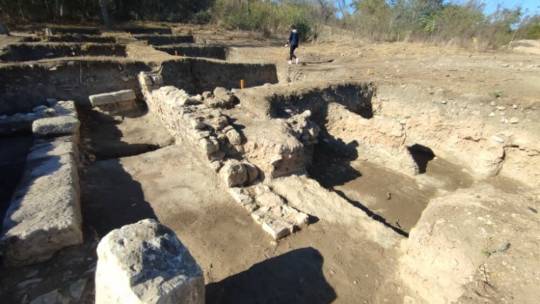
Archaeologists Discovered Roman Floor Mosaics in Bulgaria
Archaeologists discovered floor mosaics with early Christian designs and nearly 800 artifacts in the archaeological reserve of Marcianopolis in Devnya, in the northeastern part of Bulgaria.
The Roman town of Marcianopolis (present-day Devnya) in northeastern Bulgaria appears to have originated as a Thracian settlement. It was later inhabited by Hellenized settlers from Asia Minor and named Parthenopolis.

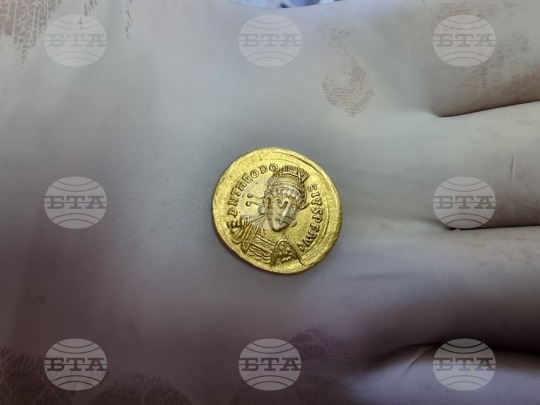
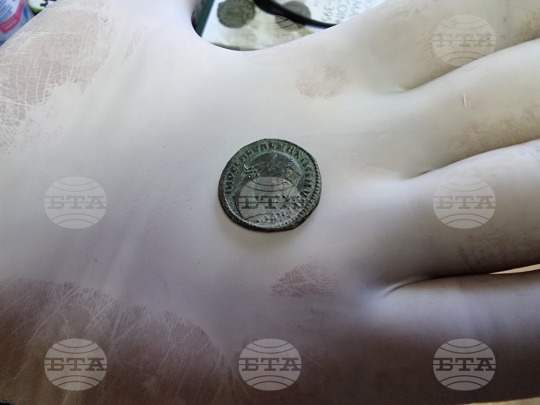
Roman Marcianopolis was established around 106 CE, following Trajan’s campaigns in Dacia to the north. The settlement was named after his sister, Ulpia Marciana. At the crossroads between Odessos (modern Varna), Durostorum, and Nicopolis ad Istrum, as well as the location of plentiful springs, Marcianopolis became a strategically important settlement.
Diocletian’s administrative reforms in the late third century CE divided Moesia Inferior into Moesia Secunda and Scythia Minor, with Marcianopolis serving as the former’s administrative capital. Marcianopolis experienced its most prosperous period during the middle of the fourth century CE. From 367 CE to 369 CE, the eastern emperor Valens used Marcianopolis as his winter quarters during campaigns against Visigoth incursions in the region. During this time, it served as the Eastern Empire’s temporary capital.

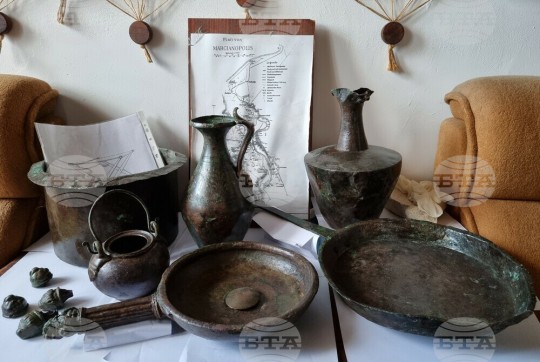

Floor mosaics with early Christian designs were found in the remains of a building. Archaeologists are not yet sure whether it was a public building or it belonged to a rich Roman citizen.
The tentative dating of the mosaics is in the first half of the 4th century AD.
The finds from the current archaeological season in Devnya contain another thousand bronze coins, several clay lamps and two clay vessels, which are awaiting scientific processing and restoration.
During the past archeological season, researchers restored bronze vessels discovered in the 1990s in a brick-walled tomb dating to the late 2nd – early 3rd century.
The vessels had a ritual use and were related to the personality of the person buried, Mosaic Museum director Ivan Sutev said in a statement to BTA.


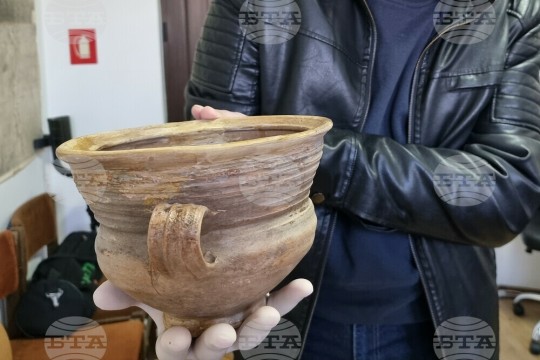

They are richly decorated and the workmanship is exquisite, he added. The find includes a vessel for pouring liquids as offering to a deity, and a wine jug with a trefoil mouth (oenochoe). A simple kitchen pan was also found along with these. All this leads archaeologists to suggest that a Roman citizen of Marcianopolis may have been laid to rest in the tomb, but that he may have had more specific functions: a soldier, a cook, or even a priest, Sutev said.
Pottery that was discovered in the basilica’s environs during excavations in 2023 has since been restored. Among these are a mortarium vessel for liquids and an exquisite crater-shaped pot for liquids. These were located in the structure with the mosaic floors. Coins from the time of Emperor Theodosius II were also found scattered on the floor.
In 447, Attila’s Huns captured and destroyed Marcionopolis after conquering the entire Balkan Peninsula but failing to capture Constantinople. That is determined by 20 gold coins scattered on the floor of the building being studied. On one side of the coins is an image of Theodosius II, while on the other is the patron goddess of Constantinople. Among the coins discovered during the Marcianopolis excavations were those from the city’s founding in the second century. The latter are dated to the sixth century, around the time of Emperor Justinian.
By Oguz Buyukyildirim.
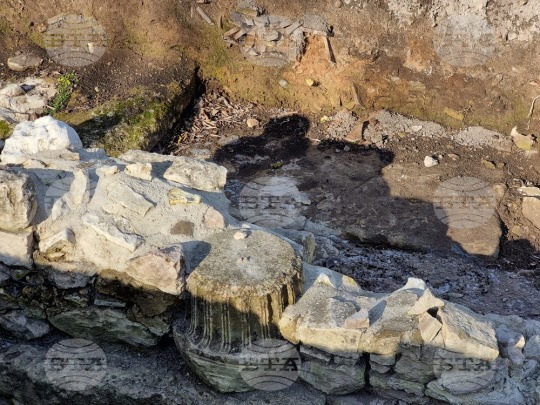
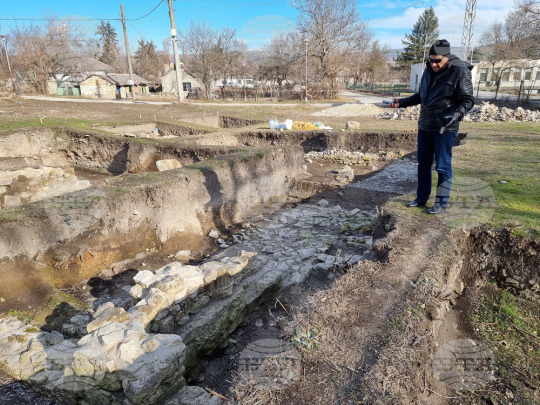
#Archaeologists Discovered Roman Floor Mosaics in Bulgaria#The Roman town of Marcianopolis#gold#gold coins#roman gold coins#ancient artifacts#archeology#archeolgst#history#history news#ancient history#ancient culture#ancient civilizations#roman history#roman empire#roman art#Emperor Theodosius II
44 notes
·
View notes
Text

Taken from a French Archaeology site on Facebook so if things aren't the most accurate...blame the French establishment rather than me for being lazy.
"It was in the heart of Châtillonnais, during the winter of 1953, that two archaeologists, Maurice Moisson and René Joffroy, made an extraordinary find: that of a princely tomb in Vix (Côte d'Or).
In this tomb rested, for eternity, a Celtic princess of the 6th century before our era (BCE/BC) belonging to some "barbarian" society, in connection with the Hellenistic and Etruscan worlds. Under the gigantic tumulus long leveled, the burial chamber contained disproportionate, unthinkable furniture. The central element was a crater, decorated with gorgonians and hoplite friezes: A gigantic bronze vase weighing more than 200 kilos, with a capacity of more than a thousand liters: the largest that Antiquity has bequeathed to us. Also present are a silver phiale (cup), an oenochoe, bronze basins, an exceptional golden torque. This tomb constitutes, in France, the greatest Celtic discovery of the 20th century."
9 notes
·
View notes
Text
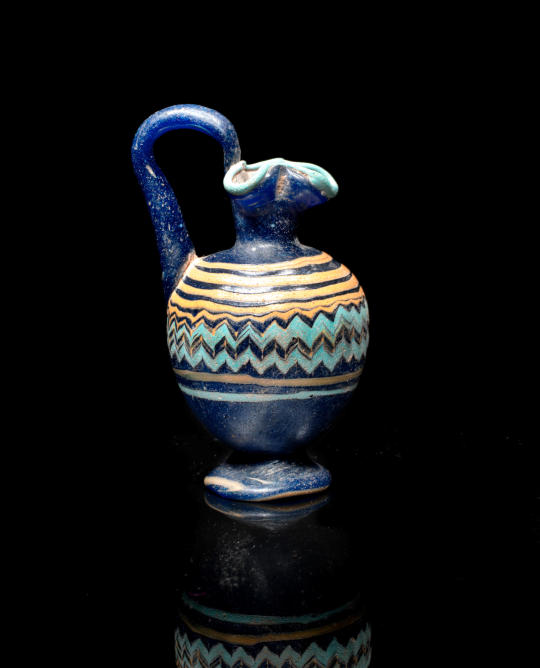



Ancient Mediterranean core-formed glass vessels.
Oenochoe (wine jug), c. mid 6th-4th century BCE Aryballos (perfume bottle), c. late 6th-5th century BCE Oenochoe (wine jug), c. late 6th-5th century BCE Amphoriskos (container for oil), c. late 6th-early 5th century BCE
4 notes
·
View notes
Photo
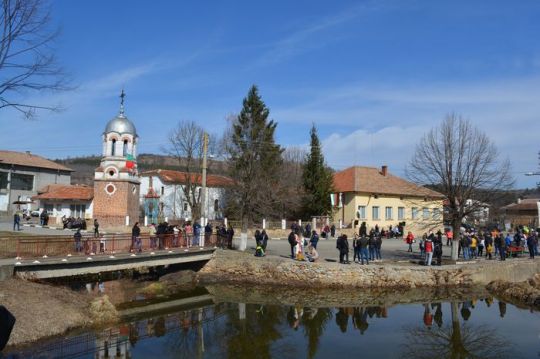
Marble statue of Ephebus
Staircase {down) on the Wall.—Large bas-relief of a Thracian horseman from Salonica, 3rd cent. B.c.
BOOM HO. 20.—Marble statues and friezes of Boman period from Aphrodisias.
BOOM NO. 21.—On entering: A marble statue of Ephebus standing, from Tralles. This is one of the finest marble statues of the Museum, and it belongs to the Hellenistic art, i.e., about the 3rd cent. B.c. On the right: Archaic statues. On the left: Statues of the Hellenistic period. Head of Alexander the Great from Cos. Head of Alexander the Great (part of the nose broken) from Pergamos. Bust of Apollo from Tralles, 3rd cent. B.c. This statue was not cut out of a single block, but consisted originally of six pieces held together by clamps.
BOOM NO. 22.—On the right: Statues of the Greco-Roman period. On the left of the Roman period: Statue of Hadrian from Crete, and representing the Emperor standing and trampling on the figure of a child representing Cyrenaica Yicta. Statue of Nero from Tralles.
ROOM NO. 23,OR BYZANTINE HALL.—(On the floor) large mosaic from Syria discovered by Prof. H. Butler of Princeton University. Also several other marble objects of the early Christian period.
ROOM NO. 24.—Marble statues of Roman period.
ROOM NO. 25.—Assyrian statues.
Archaic statue of Hercules
ROOM NO. 26, OR HERCULES ROOM.—Archaic statue of Hercules from Cyprus represented as killing a Ron. Also Assyrian statues.
ROOM NO. 27.—Various funereal steles, mostly from tombs in Asia Minor.
ROOM NO. 1
The sarcophagus called the Satrap’s, No. 18, was unearthed at Saida in 1887 by Hamdi Bey and his party. It is of Paros marble, and was originally painted; traces of blue are still visible on one of its faces, the rest of the colouring having been effaced, and the carvings themselves much worn, by the action of the water which filled the chamber of the catacomb in which it was discovered. One of the comers of the trough and lid was unfortunately broken off during the excavating operations, but the fragments have now been pieced together again.
This sarcophagus, in its general aspect, represents a Greek temple. The trough is in the form of a truncated pyramid, and is anthropoid inside; the bottom is adorned with a row of rais de cceur, and the top with a row of pearls and ovulae; on the sides are four sculptured panels in a framing of carved palm-leaves.
The head or northern panel, represents a funeral banquet. The corpse is depicted laid out on a bier, and is evidently that of some Oriental potentate or satrap, with a long beard and hair bound with a head-band, and clad in long flowing robes. Its left hand grasps a goblet, while its right holds a rhyton, and is extended towards a female figure in a long tunic and with hair confined by a head- band, who stands in front of him in the act of replenishing the rhyton from an oenochoe. Behind the woman is another seated on a chair, and with part of her himcdion drawn over her head, while yet another female figure is depicted towards the satrap’s right.
0 notes
Photo

Marble statue of Ephebus
Staircase {down) on the Wall.—Large bas-relief of a Thracian horseman from Salonica, 3rd cent. B.c.
BOOM HO. 20.—Marble statues and friezes of Boman period from Aphrodisias.
BOOM NO. 21.—On entering: A marble statue of Ephebus standing, from Tralles. This is one of the finest marble statues of the Museum, and it belongs to the Hellenistic art, i.e., about the 3rd cent. B.c. On the right: Archaic statues. On the left: Statues of the Hellenistic period. Head of Alexander the Great from Cos. Head of Alexander the Great (part of the nose broken) from Pergamos. Bust of Apollo from Tralles, 3rd cent. B.c. This statue was not cut out of a single block, but consisted originally of six pieces held together by clamps.
BOOM NO. 22.—On the right: Statues of the Greco-Roman period. On the left of the Roman period: Statue of Hadrian from Crete, and representing the Emperor standing and trampling on the figure of a child representing Cyrenaica Yicta. Statue of Nero from Tralles.
ROOM NO. 23,OR BYZANTINE HALL.—(On the floor) large mosaic from Syria discovered by Prof. H. Butler of Princeton University. Also several other marble objects of the early Christian period.
ROOM NO. 24.—Marble statues of Roman period.
ROOM NO. 25.—Assyrian statues.
Archaic statue of Hercules
ROOM NO. 26, OR HERCULES ROOM.—Archaic statue of Hercules from Cyprus represented as killing a Ron. Also Assyrian statues.
ROOM NO. 27.—Various funereal steles, mostly from tombs in Asia Minor.
ROOM NO. 1
The sarcophagus called the Satrap’s, No. 18, was unearthed at Saida in 1887 by Hamdi Bey and his party. It is of Paros marble, and was originally painted; traces of blue are still visible on one of its faces, the rest of the colouring having been effaced, and the carvings themselves much worn, by the action of the water which filled the chamber of the catacomb in which it was discovered. One of the comers of the trough and lid was unfortunately broken off during the excavating operations, but the fragments have now been pieced together again.
This sarcophagus, in its general aspect, represents a Greek temple. The trough is in the form of a truncated pyramid, and is anthropoid inside; the bottom is adorned with a row of rais de cceur, and the top with a row of pearls and ovulae; on the sides are four sculptured panels in a framing of carved palm-leaves.
The head or northern panel, represents a funeral banquet. The corpse is depicted laid out on a bier, and is evidently that of some Oriental potentate or satrap, with a long beard and hair bound with a head-band, and clad in long flowing robes. Its left hand grasps a goblet, while its right holds a rhyton, and is extended towards a female figure in a long tunic and with hair confined by a head- band, who stands in front of him in the act of replenishing the rhyton from an oenochoe. Behind the woman is another seated on a chair, and with part of her himcdion drawn over her head, while yet another female figure is depicted towards the satrap’s right.
0 notes
Photo
Random cute observation.
How did that oenochoe vase get onto his back? Well, perhaps in a fit of drama, he laid down, then lifted it off the ground and balanced it on his back before passing out.
Perhaps someone was like "heh." and left it there.
🤣🤣

1K notes
·
View notes
Photo

Marble statue of Ephebus
Staircase {down) on the Wall.—Large bas-relief of a Thracian horseman from Salonica, 3rd cent. B.c.
BOOM HO. 20.—Marble statues and friezes of Boman period from Aphrodisias.
BOOM NO. 21.—On entering: A marble statue of Ephebus standing, from Tralles. This is one of the finest marble statues of the Museum, and it belongs to the Hellenistic art, i.e., about the 3rd cent. B.c. On the right: Archaic statues. On the left: Statues of the Hellenistic period. Head of Alexander the Great from Cos. Head of Alexander the Great (part of the nose broken) from Pergamos. Bust of Apollo from Tralles, 3rd cent. B.c. This statue was not cut out of a single block, but consisted originally of six pieces held together by clamps.
BOOM NO. 22.—On the right: Statues of the Greco-Roman period. On the left of the Roman period: Statue of Hadrian from Crete, and representing the Emperor standing and trampling on the figure of a child representing Cyrenaica Yicta. Statue of Nero from Tralles.
ROOM NO. 23,OR BYZANTINE HALL.—(On the floor) large mosaic from Syria discovered by Prof. H. Butler of Princeton University. Also several other marble objects of the early Christian period.
ROOM NO. 24.—Marble statues of Roman period.
ROOM NO. 25.—Assyrian statues.
Archaic statue of Hercules
ROOM NO. 26, OR HERCULES ROOM.—Archaic statue of Hercules from Cyprus represented as killing a Ron. Also Assyrian statues.
ROOM NO. 27.—Various funereal steles, mostly from tombs in Asia Minor.
ROOM NO. 1
The sarcophagus called the Satrap’s, No. 18, was unearthed at Saida in 1887 by Hamdi Bey and his party. It is of Paros marble, and was originally painted; traces of blue are still visible on one of its faces, the rest of the colouring having been effaced, and the carvings themselves much worn, by the action of the water which filled the chamber of the catacomb in which it was discovered. One of the comers of the trough and lid was unfortunately broken off during the excavating operations, but the fragments have now been pieced together again.
This sarcophagus, in its general aspect, represents a Greek temple. The trough is in the form of a truncated pyramid, and is anthropoid inside; the bottom is adorned with a row of rais de cceur, and the top with a row of pearls and ovulae; on the sides are four sculptured panels in a framing of carved palm-leaves.
The head or northern panel, represents a funeral banquet. The corpse is depicted laid out on a bier, and is evidently that of some Oriental potentate or satrap, with a long beard and hair bound with a head-band, and clad in long flowing robes. Its left hand grasps a goblet, while its right holds a rhyton, and is extended towards a female figure in a long tunic and with hair confined by a head- band, who stands in front of him in the act of replenishing the rhyton from an oenochoe. Behind the woman is another seated on a chair, and with part of her himcdion drawn over her head, while yet another female figure is depicted towards the satrap’s right.
0 notes
Photo

Marble statue of Ephebus
Staircase {down) on the Wall.—Large bas-relief of a Thracian horseman from Salonica, 3rd cent. B.c.
BOOM HO. 20.—Marble statues and friezes of Boman period from Aphrodisias.
BOOM NO. 21.—On entering: A marble statue of Ephebus standing, from Tralles. This is one of the finest marble statues of the Museum, and it belongs to the Hellenistic art, i.e., about the 3rd cent. B.c. On the right: Archaic statues. On the left: Statues of the Hellenistic period. Head of Alexander the Great from Cos. Head of Alexander the Great (part of the nose broken) from Pergamos. Bust of Apollo from Tralles, 3rd cent. B.c. This statue was not cut out of a single block, but consisted originally of six pieces held together by clamps.
BOOM NO. 22.—On the right: Statues of the Greco-Roman period. On the left of the Roman period: Statue of Hadrian from Crete, and representing the Emperor standing and trampling on the figure of a child representing Cyrenaica Yicta. Statue of Nero from Tralles.
ROOM NO. 23,OR BYZANTINE HALL.—(On the floor) large mosaic from Syria discovered by Prof. H. Butler of Princeton University. Also several other marble objects of the early Christian period.
ROOM NO. 24.—Marble statues of Roman period.
ROOM NO. 25.—Assyrian statues.
Archaic statue of Hercules
ROOM NO. 26, OR HERCULES ROOM.—Archaic statue of Hercules from Cyprus represented as killing a Ron. Also Assyrian statues.
ROOM NO. 27.—Various funereal steles, mostly from tombs in Asia Minor.
ROOM NO. 1
The sarcophagus called the Satrap’s, No. 18, was unearthed at Saida in 1887 by Hamdi Bey and his party. It is of Paros marble, and was originally painted; traces of blue are still visible on one of its faces, the rest of the colouring having been effaced, and the carvings themselves much worn, by the action of the water which filled the chamber of the catacomb in which it was discovered. One of the comers of the trough and lid was unfortunately broken off during the excavating operations, but the fragments have now been pieced together again.
This sarcophagus, in its general aspect, represents a Greek temple. The trough is in the form of a truncated pyramid, and is anthropoid inside; the bottom is adorned with a row of rais de cceur, and the top with a row of pearls and ovulae; on the sides are four sculptured panels in a framing of carved palm-leaves.
The head or northern panel, represents a funeral banquet. The corpse is depicted laid out on a bier, and is evidently that of some Oriental potentate or satrap, with a long beard and hair bound with a head-band, and clad in long flowing robes. Its left hand grasps a goblet, while its right holds a rhyton, and is extended towards a female figure in a long tunic and with hair confined by a head- band, who stands in front of him in the act of replenishing the rhyton from an oenochoe. Behind the woman is another seated on a chair, and with part of her himcdion drawn over her head, while yet another female figure is depicted towards the satrap’s right.
0 notes
Text
Belly Amphora Ajax And Achilles Playing A Game | Apulian Red Figure Pelike | Ancient Greek Vase Replicas For Sale | High Quality Custom Replica Impressionism Oil Painting |
Ancient Greek Vase Replicas For Sale
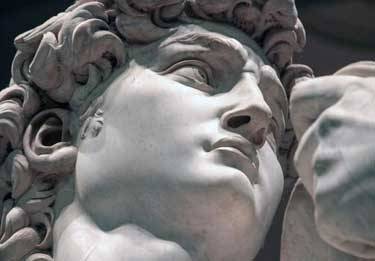
Attic red-figure hydria-kalpis (vase for transporting water) decorated with a scene depicting soldiers marching forth to fight. A young family member, possibly the warrior's sister or wife, is depicted on the right side of the composition, holding an oenochoe with a trefoil-mouthed oenochoe and poised to perform a libation
#Ancient Greek Vase Replicas For Sale#High Quality Custom Oil Painting Replicas#Museum Qualith Replicas#High Quality Custom Replica Impressionism Oil Painting
0 notes
Photo
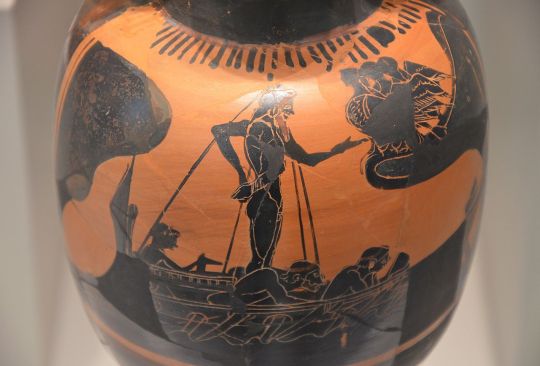
Odysseus listens to the song of the Sirens. Attic black-figure oenochoe, artist unknown; ca. 525-500 BCE. Now in the Altes Museum, Berlin. Photo credit: Carole Raddato.
#classics#tagamemnon#Ancient Greece#Archaic Greece#classical mythology#Odysseus#Odyssey#The Odyssey#Sirens#art#art history#ancient art#Greek art#Ancient Greek art#Archaic Greek art#black-figure#vase painting#oinochoe#oenochoe#Altes Museum
133 notes
·
View notes
Photo
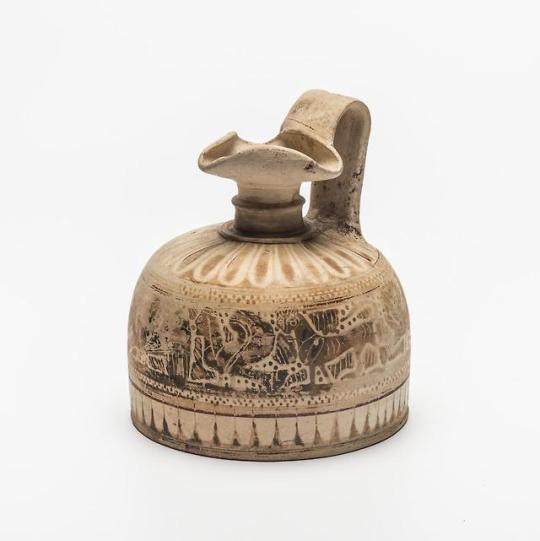
Oenochoe
Place: Ancient Greece, Corinth
Date: Circa 570- 550 BC
Material: yellowish clay, brown lacquer, purple paint
The State Hermitage Museum
35 notes
·
View notes
Photo

Three foil mouth modeled oenochoe with female face from the early 5th century BCE from the collection of the Archaeological Museum of Thebes https://en.wikipedia.org/wiki/Archaeological_Museum_of_Thebes
1 note
·
View note
Text
Greek oenochoe
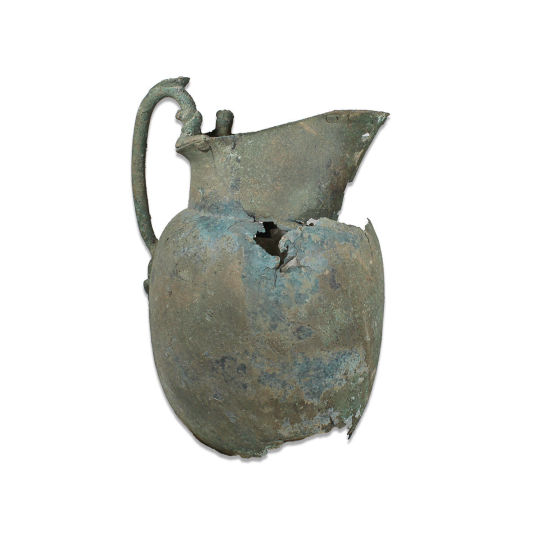
ITEM Oenochoe MATERIAL Bronze CULTURE Greek PERIOD 4th - 2nd Century B.C DIMENSIONS 210 mm x 150 mm CONDITION Damaged PROVENANCE Ex Dutch private collection, acquired between 1960 - 1980 Read the full article
#ancient#ancientart#ancienthistory#antiquity#artefact#artifact#ancientartifacts#antiquities#art#artobject#ancientgreece#ancientworld#history#classical#archaeology#greek#bronze#vessel#oenochoe
0 notes
Photo

Exposition Picasso and Antiquity : Line and Clay. Pablo Picasso : Femme debout, Femme avec jupe bleue, jeune guerrier grec, Réconciliation entre Sparte et Athenes, Joueur de flute assis, Tête d’une chèvre, Pignate décoré d’une chèvre et buste d’homme tenant une tasse. Kernos bowl,12eme av.JC., Trefoil oenochoe (wine jug) depicting wild goat grazing. #museedesartscycladiques #picassoandantiquity #lineandclay #pablopicasso #picasso #museepicassoparis #bernardruizpicasso #lysistrata #aristophane #sparte #athenes #pignate #kernos #oenochoe #photooftheday #athensmycity (à Μουσείο Κυκλαδικής Τέχνης) https://www.instagram.com/p/B0-M5GzC6Ko/?igshid=hisx0jo7kj81
#museedesartscycladiques#picassoandantiquity#lineandclay#pablopicasso#picasso#museepicassoparis#bernardruizpicasso#lysistrata#aristophane#sparte#athenes#pignate#kernos#oenochoe#photooftheday#athensmycity
0 notes